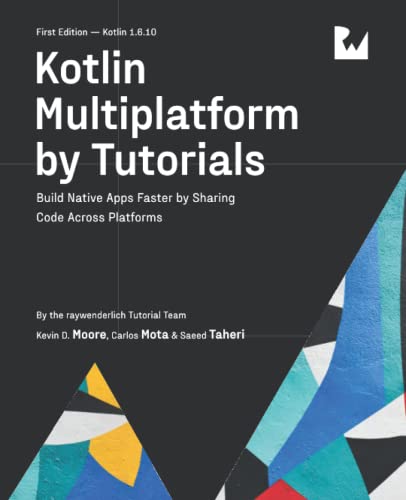The best book to teach you how to share code across platforms using Kotlin Multiplatform. You’ll gain the foundation of creating user interfaces using native UI toolkits and then writing common code for serialization, networking and persistence. You’ll also learn how dependency injection, testing and different architectures fit in with Kotlin Multiplatform so that you build maintainable and scalable apps for the real world.
Learn how to use Kotlin to share code across platforms
Mobile developers have to often repeat the same code across multiple platforms, which is not only time-consuming but also error-prone. Most documentation targets only specific use cases but misses out on the nuances essential to sharing code effectively across platforms.
Kotlin Multiplatform by Tutorials will help you efficiently implement real-world apps for different platforms by sharing common code.
Who this book is for
This book is for mobile developers and managers who want to explore how they can use Kotlin Multiplatform to share code across Android, iOS and desktop apps. If you want to reduce development and testing time by writing certain parts of your apps only once, this book will help.
Topics covered in Kotlin Multiplatform by Tutorials
- Jetpack Compose Android: Use Android’s latest UI toolkit to quickly spin up the UI for different screens of your Android app.
- Compose Multiplatform: Use the concepts you learned in Jetpack Compose Android to develop the UI for desktop apps.
- SwiftUI: Learn how to develop the UI for iOS and macOS apps entirely in Swift.
- Testing: Make your code reliable by writing tests for both common code as well as platform-specific code.
- Koin: Learn about dependency injection and how you can use Koin to implement dependency injection in multiplatform apps.
- SQLDelight: Create a common persistence layer for your multiplatform apps while also getting the benefits of compile-time safety for schemas, statements and migrations.
- Serialization: Learn about different serialization formats and how you can use them to parse JSON data fetched from the Internet.
- Ktor: Implement a common networking layer with support for platform-specific HTTP clients.
- Coroutines: Learn about structures concurrency and the considerations to keep in mind while using coroutines on different platforms.
One thing you can count on: after reading this book, you’ll be prepared to create modules where you can write your code only once but target multiple platforms.
